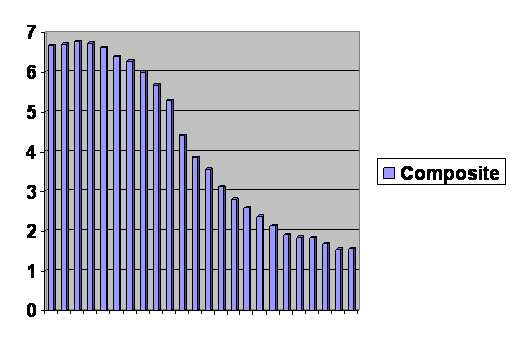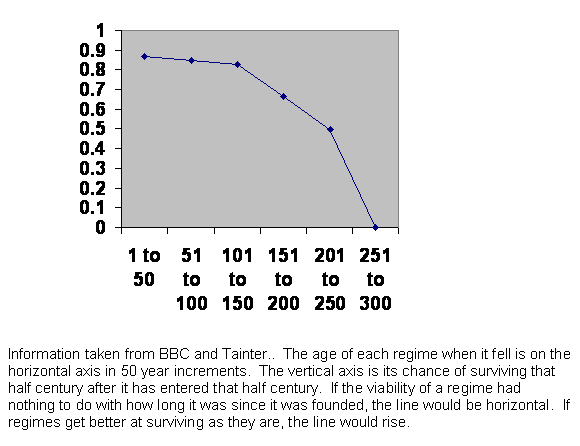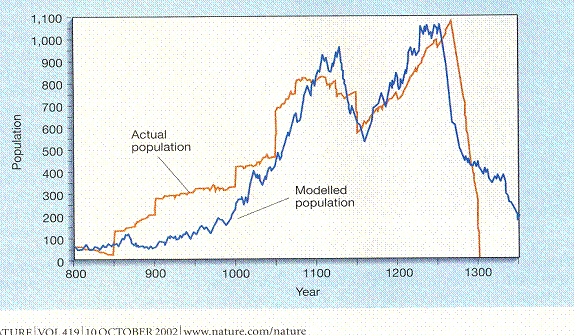
No babies, no future value, no value now:
If I were to ask you for a dollar on the promise to pay you two dollars in a year, you might give me the dollar, but as such informal arrangements go, you would have little expectation of getting it back, much less your interest. If I went to the bank for a loan, the interest rate would not be as high, but they would expect me to put something of value up to secure the loan, like my house. Even then they would properly reserve some money to cover the chance that I fail to pay, the chance that the value of the house might decline, all the costs of bookkeeping, fees, commissions, taxes, and what not. The fact that they do not seem to have been doing so in the recent past does not count; they are supposed to do it. They must allow for the fact that I will be paying the loan back with dollars that are worth less than the dollars I am borrowing. And on top of all that, they will charge me “interest,” the value of the use of the money for the allotted time. This is the “real” interest rate, and it is determined by a market in which some people borrow, some lend, and each tries to get the best possible deal. The fact that the market seems shaky also does not count for our present discussion.
So what should the real interest rate be? What would be fair? Suppose that, on paper, you were to buy the whole world and sell it back a year later. Would you make money? In most years over the past few centuries, you would have made a lot of money. The market value of the world has gone up. That is because the total wealth produced by the world each year has been going up ever since the Industrial Revolution and before. That is the economic growth rate. The bottom line is that real interest rates cannot be very different from the world economic growth rate for very long. That would be a fair interest rate.
Now suppose I ask for a dollar again, but this time I make no offer to pay it back. I would probably have about the same luck as before. But suppose you are investing your money with the intention of making money. Some creditable organization, say the US government, offers to take your money and give you a bond, a promise to pay a certain amount of money at some time in the future. In fact, they will auction the bond off. You look at what is on offer, make the usual calculations to determine what a bond, say for $1,000 in one year, is worth to you now and either buy or don’t depending on the price a the present price in the market. If the bond is to be repaid in 10 years, the current market value will be different.
So what is the value of a bond that is worth $0 in ten years? It is worth $0 now. And if the world is going to be shattered by a meteor impact in 10 years, what is its market value now? Zero. And if people with money to spend are going to stop having babies in 40 years, the market value of the world is already zero. In order for a rational market economy to work, there must be a future.
There is more than one way to run an economy. There is a traditional approach in which people just do what they have done before. There is a command approach in which someone in charge makes plans and everyone else has to go along. And there is a market approach in which everyone does what seems best locally at the moment. There may be others. Economies generally are a mix of all three or more. In the past there was a sort of a contest between the more planned Soviet economy and the more market driven free world economy. The Soviet Union failed, probably because of demographic factors, and the free world leader decided the market was king and tried to make it that way. That has had mixed success, as usual, but it has done nothing to get us of off the UN curve I have shown more than once.
Here it is again.

This is the birth rate of the world over the past fifty years divided into three regions of economic development and then cut and pasted to show the path of the birth rate in a single idealized but far from ideal population over about 130 years.
This implies a fertility cycle of some 130 to 150 years. This is in contrast with the historical experience of civilizations, in which there is political upheaval that comes along by about 300 years. You remember the chart of the survival of the Mayans, the Anasazi of Chaco Canon and Rome. Here it is again. We have seen the same pattern elsewhere as well.

There is an apparent contradiction. Perhaps real populations undergo cycles like the computer model population does but fail at the end of the second cycle. The reason for failing the second time but not the first is something I hope to address in a few days. Meanwhile let us look back at the experience of the Anasazi Indians in Long House Valley, where there was also a 300 year life span that appeared to be the result of two population cycles.
Here is the graph again.

Jared M. Diamond, “Life with the Artificial Anasazi,” NATURE, vol 419 no 6907, October 10, 2002 p 567.
They died out in 1300, just 30 years after their absolute numbers began to fall. That is their numbers as calculated by looking at the number of houses that had charcoal from each individual year and assuming a constant average number of occupants from each household.
Starting with the year 800, there was a period of declining population, perhaps from inbreeding depression. This was followed by steady growth both by natural increase and immigration (recognized as vertical lines) until 1000, when the 300 year cycle begins. Each cycle consists of a roughly 75 year growth phase and then a 75 year retreat. If my argument about the economy and birth rate is at all valid, a visit to the valley in 1150 should have shown us people that seemed less prosperous than they would be 59 years later. The suggestion is that midway through every cycle of civilization there is a period of low birth and low income. Was a time of low birth rate and low prosperity in our own history?
The answer is yes. It was called the Great Depression, which pretty much covered the 1930’s. The fact that infertility and economic collapse coincide cannot be coincidence, and we have shown elsewhere that income does not drive fertility, so fertility drives the economy. The Depression began about 80 years ago. That would put us even with the Anasazi in 1230 with a population that is still rising and about 70 years until the developed world dies out. The market, unsentimental beast that it is, is already looking rather squirrelly.
Most countries count the children of immigrants as members of their population. Germany does not. Therefore the German birth rate is probably the fairest estimate of what a rich country’s population is doing now. The birth rate appears to be falling so fast that the youngest woman who will ever have children is probably 10 years old. The last child will be born in the developed world (if nothing changes, and the whole point of this exercise is to make some changes) in 30 years. In 70 years that child will be 40.
Already the fires are going out in Russia. There is an absolute decline in their population because of a short life expectancy combined with an inadequate birth rate. This has been going on since 1991, call it about 10 years. My understanding is that life expectancy for men in Russia is somewhere in the fifties, just like NFL football players, just like graduates of Harvard Medical School, just like keelboat men, and probably just like the Anasazi. The male warrantee expires when a man is in his fifties, say 55. He can no longer endure the endless pitiless toil he endured in youth. And 55 is probably as long as he is likely to be able to survive in the withering society he will then face. So maybe there is something in our analysis. We die out in 70 years timed from the depression and die out in 85 years timed from the birth of the last fertile child for a difference of 15 years. 15 years is not a bad agreement for an estimate based on two completely different lines of evidence for something so far in the future. I have rounded my historical data to the nearest 50 years, so there is no reason to expect anything more accurate than that.
Of course I may be too optimistic. When the birth rate falls to nothing, there may be social upheavals, as so carefully analyzed in the novel Children of Men.
Then again, this is only referring to the developed world. The less-developed-but-not-least-developed world is behind us lock step and failing major changes will follow the same path. But the least developed world ought to be a source of hope. They have probably all been through this any number of times in the deep past, but long ago worked out regrettable but effective ways to limit their gene pool size. For them, this should be their first cycle. They ought to pull out of it and have another 150 years in which to reestablish their traditional defenses.
But they have one thing their traditions have ill equipped them for. The AK 47, inaccurate, ugly and either trash flimsy or gut-wrenching expensive, there are 100 million of them out there with plenty of ammunition. They could kill more people faster than all the nuclear weapons in the world let slip at the same time.
And they are right where you least want to have them, disproportionately burdening the least developed regions, politically unstable and famine ridden as they are, with worse to come when the developed world dies. (“If and when,” “If and when.” We can turn this around even this late.) They threaten the last best hope for humanity.
There have been 1,696 visitors so far.